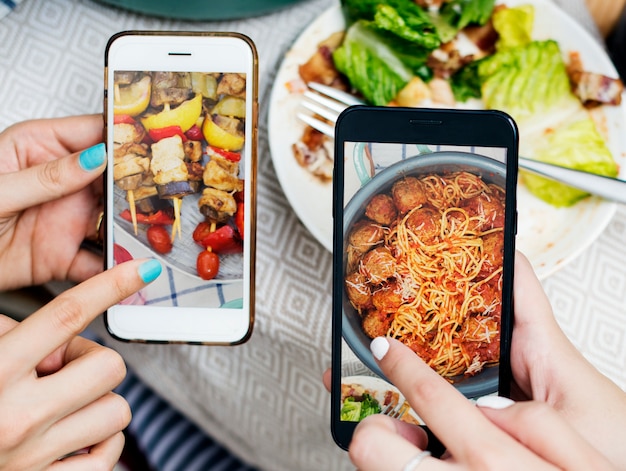
If you use social media regularly, chances are you have probably seen pictures of delicious food all around your social media platforms like Facebook or Instagram. Or you may be the one posting those pictures online. Today, after pornography, food has been the second most search-for content on the internet. It is understandable since the sight of food automatically affects our ‘visual hunger’ or the natural desire to fulfill the sufficient nutrients for survival. Therefore, people feel comfortable viewing pictures of food. The thing is, most people are not aware of what’s following when they see lots of food photos in digital media.
According to Jason Thomas’ study on social influences on eating, our dietary behaviour is strongly influenced by social context. In this manner, food network creates the cultural expectations and environmental cues that make people more likely to follow the eating norm they saw on social media sites. In the modern days, many food networks have become more
dominant in people’s appetite. A popular media platform like BuzzFeed’s Tasty, for instance, focussing on the video series of worldwide instructional recipes play an important role in our eating choices. Tasty itself has more than ninety-five million likes on Facebook. Evidentially, its videos acquired over 2.2 billion views in March 2017. A research “Brain and Cognition” explains that more than 70 percent of food Americans eat is influenced by digital media.
https://www.facebook.com/buzzfeedtasty/videos/vl.1307011139415082/1774752866110688/?type=1
The research shows that our brain responses to images of desirable food, or in another word, food porn or gastro-porn. Food porn is a new concept of glamorized photos and videos of palatable food on the internet. Although pictures of food are nothing new. We have always seen them on commercials and magazine ads for years, but in this case, the nature and types of pictures are more sophisticated and photographed from the different vantage point. They are magnified and often the center of the media. The drawbacks came when we are exposed to the more appetizing images of food which are often high calories. Apparently, food networks like Tasty likely propose the basic American dishes that contain high calories and can be considered not a healthy food.
Seeing the photos, our physiological responses get to prepare our body to receive that food. As a result, the virtual food exposure psychologically stimulates hunger and induces the viewers to eat more frequently, disrupting the usual dietary routines. Moreover, in 2015, a survey of nutritional gatekeepers proved the correlation between viewing cooking shows, food in social and printed media, and having a higher BMI (Body Mass Index). People tend to eat regardless of the satiety but the desire to consume whatever they found appetizing on social media. After all, our eating intakes are changed. The growing obesity crisis proves that we failed our eating behaviour. But not all to blame food porn, many factors have led us to worse dietary habits. Still, we could deny that the excessive sight of desirable food on social media is triggering our hunger to consume over the appropriate amount.
Reference:
Suzanne Higgs and Jason Thomas (2016), Social influences on eating, Diet, behaviour and brain function, Current Opinion in Behavioral Science, 9:1-6, Elsevier Ltd. DOI: https://doi.org/10.1016/j.cobeha.2015.10.005
Susan Albers, Psy.D. (2012), “Food Porn?” The Hidden Risks, Eat, Drink, and Be Mindful: How to End Your Struggle with Mindless Eating and Start Savoring Food with Intention and Joy, Psychology Today. Retrieved from https://www.psychologytoday.com/us/blog/comfort-cravings/201208/food-porn-the-hidden-risks
Charles Spence, Katsunori Okajima, Adrain David Cheok, Olivia Petit and Charles Michel (2016), Eating with our eyes: From visual hunger to digital satiation, Brain and Cognition, 110:53-63 DOI: https://doi.org/10.1016/j.bandc.2015.08.006
Lizzy Pope, Lara Latimer and Brian Wansink (2015), Viewers vs. doers. The relationship between watching food television and BMI., Appetite, Elsevier Ltd. DOI: 10.1016/j.appet.2015.02.035
Tita, the idea of talking about food porn into a social dynamic is quite interesting and different. Reading through your blog indulged me into this topic like never before. The craze if food porn now indeed is a wow and how has social media involved in making this craze more crazier.Your blog does show how food porn has created its own social world. However, in paragraph 3 I sensed it incomplete. I read thru it a couple of times and am not able to catch what its conveying.